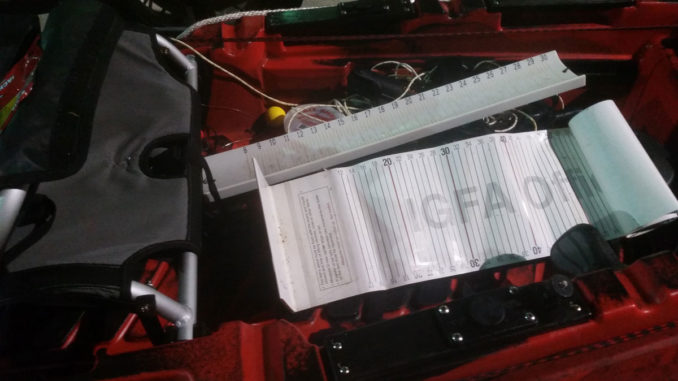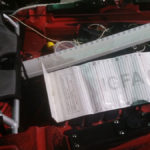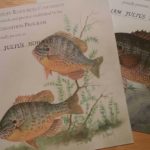
Organizations offer recognition for trophies
Anglers are among the most well-known stretchers of the truth in the land — or water, as the case may be. For some reason, everyone has had the biggest fish of their life break off right at the boat with no evidence to prove otherwise. By chance they did land the fish, it was “returned to the water to grow bigger and be caught another day.”
While many anglers know about both citation and record systems, most consider them to be strictly based on weights. For paddling enthusiasts and catch-and-release anglers, this can create a problem in getting the recognition deserved when bringing in that rare, monster catch.
What many do not know is there is a system for recognition of large catches based on the length of the fish. All you need to do is obey the rules in order to get the recognition you deserve.
North Carolina runs a freshwater catch program called the North Carolina Angler Recognition Program. The program has both weight and length measurement qualifications, and you can qualify in either. There are 37 different species eligible for the program.
To submit for the award, fill out the paperwork found at www.ncwildlife.org under the NCARP link and send in $5. You receive a certificate suitable for display with the information on your catch, featuring a drawing reproduction of the species from renowned artist Duane Raver.
The program does not stop there. An angler who is fortunate enough to land six fish large enough to qualify for certificates and submits the paperwork is also recognized as a North Carolina Master Angler. After receiving the sixth award, the angler will receive both a Master Angler certificate and Master Angler patch.
The awards can be for the same species or different species. They can also be a mixture of both weight and length accomplishments.
North Carolina keeps state records for the largest fish of 43 different species by weight only. This is more difficult for catch-and-release and kayak and canoe anglers as the fish has to be weighed on certified scales, have length and girth recorded and be witnessed. There is also the possibility of the fish losing weight after the catch and storage issues on a kayak.
Just as state records are kept for freshwater fish, the N.C. Division of Marine Fisheries also keeps records for 68 species. NCDMF also an annual saltwater tournament for 37 species. To qualify for a citation, a fish most have to reach a certain weight, while others are by release only and qualify by length. Further rules can be found at http://portal.ncdenr.org/web/mf/
The International Game Fishing Association is regarded as the official world-records keeper for all fish species, fresh and saltwater. Virtually any species that can exceed a pound in weight is eligible.
The IGFA also keeps line-class records for a number of the species, meaning records are kept not just for a catch, but also based on the line strength such as 2-pound line and up. Female angler records are kept, as well as records using fly-fishing as a technique for these same species.
One of the newly added categories the IGFA keeps is length records for a number of the more popular fish. The length records are for catch-and-release anglers and it is one of the requirements for a record to be submitted.
Why is this important?
Kayak angling has long been associated with catch-and-release due to space requirements for large coolers. Even kayak angling tournaments are catch-and-release in which CPR (catch, photo, release) is used to determine winning anglers.
With length minimums for citations and awards as well as for world records, it gives something built for the kayak-angling community. Not only do anglers have a baseline on which to judge their catch, they have something to strive for.
When you are able to set goals, things begin to focus more clearly. Virginian Rob Choi set a goal a few years ago to target master-angler status in Virginia strictly from his kayak. Only one other person had caught the six different species of minimum lengths in one year. By focusing on his goal, Choi became a better angler and learned more about the species he targeted, and that led him to recognition as one of the top kayak anglers in the country, if not the world.
It would be a shame to bring in the catch of a lifetime, or even a season, and not have the items needed in order to qualify for the recognition both you and the fish deserve.
For IGFA and North Carolina records, a certified scale must be used. The IGFA will certify a hand-held scale for a fee as long as it meets calibration requirements. The NCDMF requires fish to be weighed in at official weigh stations, a list of which is posted on its website.
For North Carolina length measurements, the typical Hawg Trough-style measuring board is adequate for citations. There are requirements as to how to measure the fish, with the mouth closed and the length measured to the tip of the pressed tail.
The IGFA requires use of its official measuring device, which is basically a bump board with a wide, vinyl sheet that rolls out and is marked in centimeters. The IGFA measures differently than the state, with the length measured to the center part of the tail. Photos are required as well, clearly showing the fish’s mouth touching the bump board and the fish flat on the surface of the device.
With a little preparation and study, it is possible to turn the season into something truly memorable.





Be the first to comment